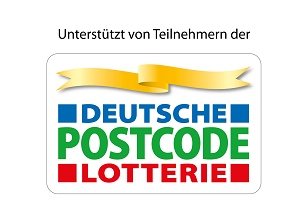Developing a Water and Sanitation Safety Plan in a Rural Community
This Compendium aims to enable communities to develop a WSSP for small-scale water supplies, e.g. dug wells, boreholes, springs and piped centralised water supply systems, and as well as to assess the quality of sanitation facilities such as school toilets.
28.05.2014

The second edition of the English language WSSP compendium has been revised and updated in 2017, see link here
Public health, safe water supply and safe sanitation are very much interrelated and are neglected or in their relevance underestimated, particularly in rural communities. Better protection and management of drinking water sources and sanitation facilities are possible, if weaknesses and strengths are identified. For the identification of possible sources of hazards and risks, the knowledge about an adequate quality of water and sanitation, the pathways of contamination and the associated risks, as well as the prevention of risks are essential. A water and sanitation safety plan (WSSP) can be one way to obtain and maintain safe drinking water and sanitation systems and to minimise related diseases. The management of a safe drinking water supply system, whether it is on a small or large scale, concerns many stakeholders.
The WSSP Compendium aims to enable communities to develop a WSSP for small-scale water supplies, e.g. dug wells, boreholes, springs and piped centralised water supply systems, and as well as to assess the quality of sanitation facilities such as school toilets, and has been prepared in the framework of the project “Water and Sanitation Safety Plans in Rural Areas of Macedonia and Romania“ funded by the German Environment Foundation DBU.
The Water & Sanitation Safety Plan (WSSP) compendium consists of three parts and is available in four different languages:
- Part A: English, Macedonian, Romanian, Russian
- Part B: English, Macedonian, Romanian, Russian
- Part C: English, Macedonian, Romanian, Russian
Learn more about the contents of each part below.
Part A: How to accomplish a water and sanitation safety plan?
Part A, consists of 8 modules, explaining the approach of developing water and sanitation safety plans (WSSP) for small-scale water supplies, and provides basic and practical guidance for developing a WSSP. Two modules focus mainly on WSSP for non-piped water supplies and on small-scale piped distribution systems. Furthermore this part introduces the practical activities in 10 steps to be carried out by a WSSP team and leading to a local WSSP. Several forms for the practical activities, doing risk assessments of the water supply or toilets, doing interviews of different stakeholders and processing the collected information and results as well as examples are provided.
The main target groups of part A are local authorities and water operators, but also teachers and NGOs. 
Part B: Background information for developing WSSP
Part B, consists of 8 modules, providing technical and regulatory information on for example possible drinking water sources, water treatment and distribution, sanitation and wastewater treatment, water protection and water quality, management of storm water and water related regulations.
The main target groups of part B are persons who appreciate more background information on water and sanitation related issues. These can be local authorities and water operators, but also teachers, NGOs and interested citizens. 
Part C: How to involve schools?
Part C, consists of 6 modules, and is an additional part, especially for youth and schools. It includes theoretical lessons on general water issues such as the water cycle, and also specific information on school sanitation, water and hygiene. The development of a WSSP is explained especially in terms of involving pupils and citizens. Exercises and suggestions for practical and interactive actions in combination with the tool box are detailed. Part C targets mainly teachers, but also youth group leaders, NGOs or local authorities.


































